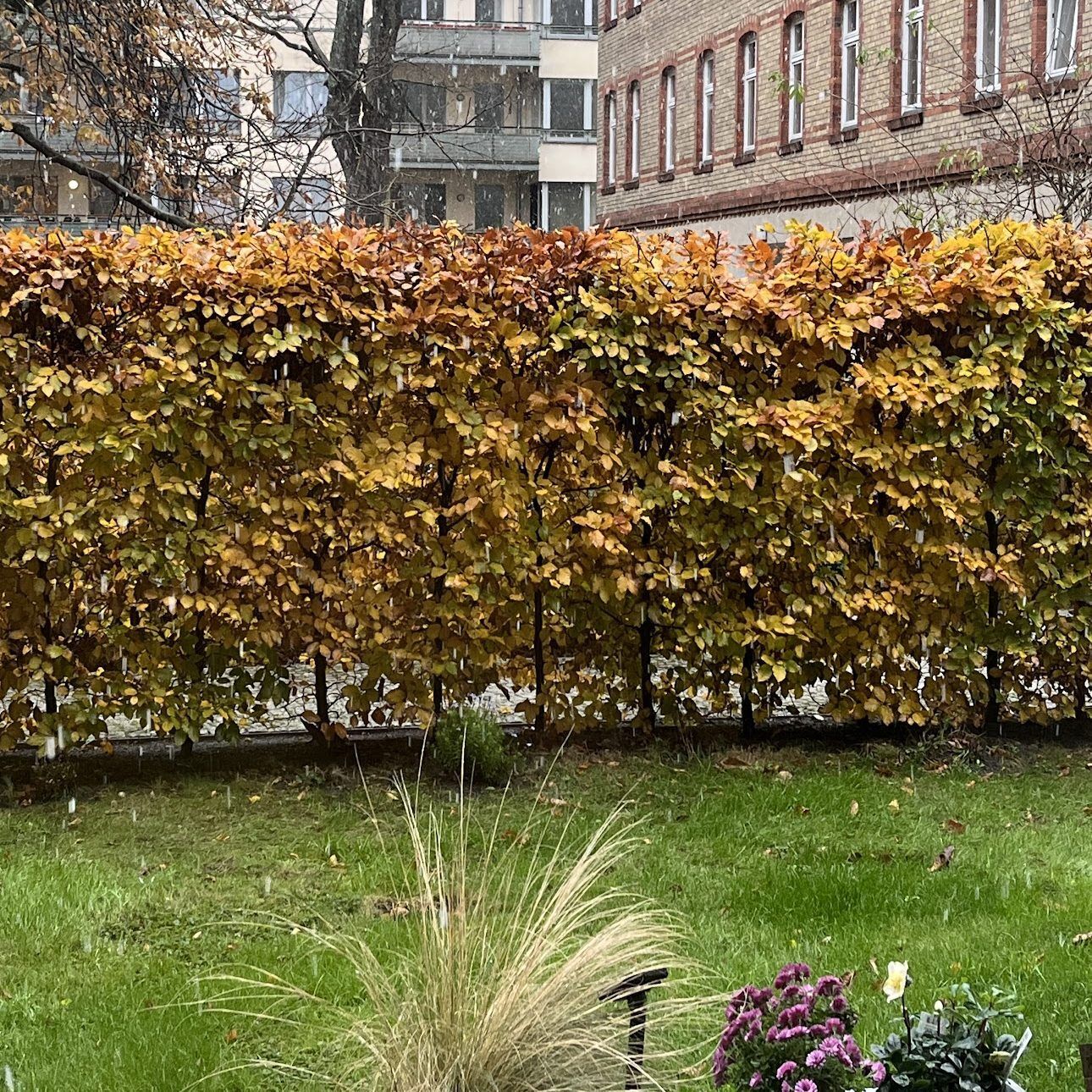- And Now What?
- Posts
- Change is Constant
Change is Constant
Spring and autumn are often rich with metaphors of change. These days, I stare out the window, noting that while the grass is still a vibrant shade of green, the hedges have evolved into earthier tones. The leaves whisper reminders of the cycles in nature and life. In fact, as I write this, the first snow is falling, but the leaves and Earth are still warm enough to gently melt the crystals as they descend.

the first snowfall
Fall negotiates with winter in this in-between time. From my yoga practice, the sutra 4.2 comes to mind, stating: the overflowing of Mother Nature’s creative energy brings transformation into a new state of being. It seems to me that, although the calendar and colors of nature mark specific seasons, we are always in-between, always in transition.
A few days ago, I visited one of my former employer’s offices for a party to honor their last days and the memories of the space before moving to a new office. I was with the organization when they moved into this office, and I recall the concerns and quiet resistance among my colleagues. Moving felt uncertain, uncomfortable, and daunting. People resisted the idea. And now, some of the same people expressed bittersweet sentiments to say goodbye and to move somewhere else, arguably better. Change that raised discomfort transformed into nostalgia and resisting new discomfort.
Spring is when we see change vividly—flowers blooming, brown branches budding into green, and eventually, leaves unfurling in full. Autumn tells a reverse story as nature undoes itself. Green gives way to yellows and browns, and leaves drift back to the earth. These changes are visible and cyclical.
But every season, whether visibly or not, is a season of change. In summer, plants recycle nutrients, converting and storing energy. In winter, sugars retreat from branches into roots, preserving life for the coming spring. Even when we can’t see it, transformation is happening beneath the surface.
As humans, we experience change when internal and external factors shift. Our natural, resilient instinct is to adapt quickly, finding comfort in new patterns—it’s how we’ve survived. Studies have shown that when someone repeatedly runs the same route, their body adapts over time to burn fewer calories to cover the same terrain and distance. According to the principle of diminishing returns or exercise adaptation, if we want to gain or maintain strength or endurance, we have to keep switching it up. Just like muscles need some stressful force and weight to continuously tear and rebuild (hypertrophy), our brains also need some stressful forces to support our evolution and well-being.
Life is continuously evolving and changing. Sometimes the same problems from the past re-present themselves as annoyances that we need to repeatedly deal with. We can call this version of challenging ourselves “past tension,” unresolved or recurring challenges that demand our energy. Alternatively, we can choose “future tension”: intentionally embracing challenges and problems that align with our goals and aspirations.
If I don’t choose how I want to grow and change, life will choose for me.
My questions for you:
What’s a transition that you have resisted or not yet acknowledged?
What is your current balance of past and future tension?
What signals tell you to make a change?
In what ways do you choose to embrace change in your life?